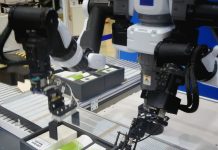Virtual Reality (VR) and Augmented Reality (AR) have come a long way from being mere concepts in science fiction to becoming transformative technologies that are reshaping various aspects of our lives. While they were initially associated primarily with gaming and entertainment, VR and AR have now found extensive applications across diverse industries, revolutionizing the way we work, learn, and interact with the world. In this article, we will delve into the real-world applications of VR and AR, exploring how these technologies are transforming fields such as healthcare, education, architecture, training, and more.
Healthcare: Enhancing Medical Training and Patient Care
Governments and private institutions are increasingly focused on how virtual reality is transforming healthcare. Medical students can now practice complex surgeries and procedures in a risk-free environment, helping them develop crucial skills with greater confidence. Additionally, AR applications are assisting surgeons during operations, providing real-time information and visualization, thus improving surgical precision and patient outcomes. Furthermore, VR is being used for therapeutic purposes, aiding patients in managing pain, anxiety, and phobias through immersive experiences.
Tourism and Travel: Immersive Exploration
VR and AR are transforming the way we plan and experience travel. Travel agencies are using VR to offer virtual tours of destinations, allowing potential tourists to experience the essence of a place before making travel decisions. AR apps are guiding tourists through cities, providing real-time information about landmarks and attractions.
These technologies are revolutionizing the travel industry, making exploration more accessible and interactive for travelers. While we all value finding the cheapest places to visit when making our travel plans, the AR and VR revolution will make even the most expensive places more available to more people.
Education: Interactive and Engaging Learning Experiences
In the realm of education, VR and AR are transforming traditional classrooms into interactive learning spaces. Students can explore historical sites, travel to outer space, or dive into the human body, all from the comfort of their desks. These immersive experiences foster better engagement and comprehension, making complex subjects more accessible and enjoyable for learners of all ages. AR, in particular, is enhancing textbooks by overlaying interactive elements, creating a dynamic and interactive learning environment.
AR, VR and Gaming
AR blends digital elements with the real world, enhancing the player’s environment by overlaying computer-generated objects onto their physical surroundings. This technology is accessible through smartphones, tablets, and AR glasses, making it more accessible than VR.
One example of augmented reality in gaming is the use of live dealers in online casinos. You can find great examples of live dealer casinos at casinobonusca. You can be sure these online casinos are good because of their thorough review process, which includes legal research, claiming bonuses, and playing games, including with live dealers. In live dealer tables, the dealer appears on your screen, providing an exciting mix of virtual and physical realities
Training and Simulation: Realistic Skill Development
From aviation to heavy machinery industries, VR and AR are being employed for training purposes, providing safe and controlled environments for learners to practice high-risk tasks. Pilots can undergo flight simulations, firefighters can practice rescue operations, and military personnel can hone their tactical skills—all within a risk-free and cost-effective setting. These technologies not only save lives but also minimize the need for physical equipment and resources during training.
Engineering and Manufacturing: Streamlining Processes
In engineering and manufacturing, VR and AR are optimizing workflows and improving product development processes. Engineers can visualize and manipulate 3D models in real-time, identifying design flaws and making necessary adjustments before physical prototyping. VR-based assembly simulations are also assisting in worker training and ensuring efficient production processes. AR is being utilized for maintenance and repair tasks, overlaying instructions on equipment to aid technicians during complex procedures.
Conclusion
Virtual Reality (VR) and Augmented Reality (AR) have evolved from futuristic concepts to transformative technologies with a vast array of real-world applications. From revolutionizing healthcare and education to enhancing architecture, training, tourism, and beyond, VR and AR are reshaping industries and enhancing human experiences. As these technologies continue to advance, their potential to drive innovation, improve efficiency, and enrich lives remains boundless. With ongoing research and development, VR and AR are poised to play an even more significant role in shaping our future interactions with the world around us.







